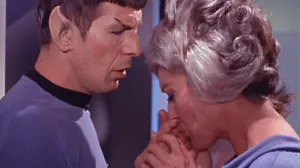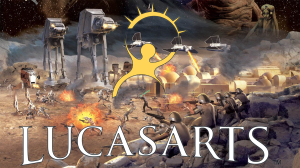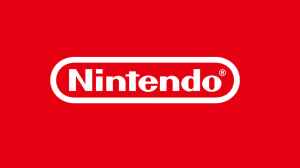In 2016, the brand-new game development team at Night School Studio, founded by cousins Adam Hines and Sean Krankel after leaving Telltale Games and Disney Interactive, released its first game, Oxenfree. The game’s evocative aesthetic, moody soundtrack, and real-time conversation-based gameplay proved a hit with critics and fans, earning awards nominations and winning one from the Independent Games Festival. Oxenfree proved successful enough for Night School Studio to remain open (which was hardly guaranteed as the studio was finding its footing) and release games like Afterparty and Next Stop Nowhere. But five years later, people are still talking about Oxenfree. Night School will celebrate Oxenfree‘s fifth anniversary throughout 2021, beginning with putting the game on sale, though they couldn’t have guessed such a fan following would build up around the game the way that it has.
Videos by ComicBook.com
“It’s been cool to see how people almost treat it like an album that they return to a lot,” Krankel detailed, whom ComicBook.com spoke to ahead of the game’s release and again via Zoom, along with Hines, for the anniversary. “I didn’t expect it to have such long-term warmth surrounding it. I thought that it would be something that, ideally, people thought was cool and interesting and spoke to them in a variety of ways. I didn’t think that it would become something like the way that I would love to return to a particular album based on the season or a particular film because it means something to me.”

In Oxenfree, players take control of Alex, a teenager heading to the local secluded island for a weekend party. She takes the last ferry to the site with her stoner best friend, Ren, and Jonas, her new-in-town stepbrother. At the island, the group meets up with Ren’s crush, Nona, and her argumentative friend Clarissa. After some awkward introductions, things get weird, and the group becomes separated. Players controlling Alex have to solve puzzles and talk their way through conflicts, with dialog choices affecting how the game ends, reuniting the group, and escaping from the fourth-dimensional ghosts haunting the island. Though not set in the 1980s, there’s an undeniable neo-Spielberg feel to the game that fans of “kids-on-bikes” stories like Stranger Things and Paper Girls would find familiar.
“We were very intentional in making sure that it felt nostalgic, but it wasn’t a period piece,” Krankel explained. “And that was scary to us in the beginning because when we were first thinking of the story for it, we were kind of like, ‘Let’s put it in the ’80s. Let’s make it very much this Spielbergian thing.’ And we pivoted away from that and went, ‘How can we make it feel like if you are 30 or 40, or if you’re 16, it’s still speaking to the same moment in time?’ I think that choice is what has led it to feel like it has longer legs and talks to somebody in that moment of their life because a year later you can still reflect on it.”
Beneath the lightly haunted, point-and-click surface, the game carries emotional depth. One of Oxenfree‘s most crucial characters doesn’t make the trip to the island. That’s because Michael — Alex’s biological brother, and Clarissa’s ex-boyfriend — died sometime earlier. Many of the game’s conversations are about Alex working through her feelings about losing her brother and gaining a new sibling in Jonas while helping (or not) Clarissa find closure.
“We jokingly sometimes would also refer to it as a grief simulator,” Krankel says, “which is something that you would not want to put at the forefront of the game. At the forefront, we want to talk about like, it’s scary sh-t, and ghosts are messing with these teens, etcetera. But there are some other very real things way under the hood that Alex has to deal with as a character. And that was a big surprise to me, how some folks in the community really have talked about how it helped them get through a hard time. That was meaningful, and some of the stuff to me that even a few years later is still really resonating; that, wow, this thing can do more than just the six-hour spooky adventure.”
While it may not be evident from how seamless the finished game is, Krankel and Hines didn’t have a well-laid plan when they started working on Oxenfree. At the time, Night School Studio was four full-time employees compared to what they’ve grown into five years later, a staff of more than a dozen full-timers and what Krankel describes as “an army of contractors.” At the time, they needed to make the most of what their small team was capable of doing.
Much of what works about the game — like a radio serving as the key to solving puzzles and unlocking new areas while also reinforcing the game’s emphasis on communication — came from necessity as much as inspiration. Hines says he remembers “everyone in the room being like, ‘Oh, and radios are communication devices too. We’re geniuses!’ It came maybe a month after already landing on we were going to use that. But that, to me, at least in my experience, is how those things go. Things feel right or feel wrong, and you can’t put words to it. Sometimes your brain takes a while to catch up when your gut already knows.” (One alternative they considered was adding a Ghostbusters-style gun to the game. “Thank God we pivoted away from that stuff,” Krankel says.)

Krankel and Hines say that they did not consider replayability when designing Oxenfree. There seemed like little point as, based on Hines’ experience at Telltale, players were unlikely to return to an adventure game once they’d reached the end of the story. And yet, six months later, they found people who bought the game played through it an average of 1.5 times, suggesting many were coming back for a second trip to the island.
This discovery shocked the developers, but it’s part of the reason why they’re taking the fifth anniversary as an opportunity to get back in touch with players. Celebration plans include something involving scntfc’s stellar synth soundtrack for the game, which sold out quickly when released on vinyl by iam8bit. Night School isn’t ready to reveal details, but Krankel says, “We have a bunch of stuff in the works. We are finding ways to start talking to the community again, as it relates to the fiction of the first game in a lot of weird ways that I’ll just keep secret now.”
As for Oxenfree‘s future, Night School partnered with Skybound to publish the game and optioned it to the company for adaptation into a film. Nothing came of the option — Krankel recalls pitches either were “very literal and practically just take Adam’s script and write it in into a 120-page version” or “pivot way too far away and would be ‘the nuclear aliens are coming,’” — and is instead in development as a television series with a still-unannounced new partner.
As for a potential sequel, they’re not ruling that out. “We’ve always wanted to return to that universe, but we also never wanted to just do it for the sake of doing it,” Krankel says. “Especially the first year after the game came out, it was hard for us, even creatively, to parse out what makes an Oxenfree game. Is it all about the universe? Is it like a Star Wars” where “you can tell any story? Or is it all about Alex, and the whole thing relies so much on her narrative that we wouldn’t want to tell a different story inside of that. I think we wrestled with that for a couple of years, but I think we’re at the point now where we are thinking of some ideas that could make a ton of sense for a sequel.
“It’s not off the table,” he continues. “We just want to make sure that if we ever do it, we don’t make a game that just feels like it came out because you could slap a ‘2’ on it. The story needs to stand on its own completely.”
Oxenfree is available now on Microsoft Windows, Mac OS, Xbox One, PlayStation 4, Nintendo Switch, Linux, iOS, and Android.








